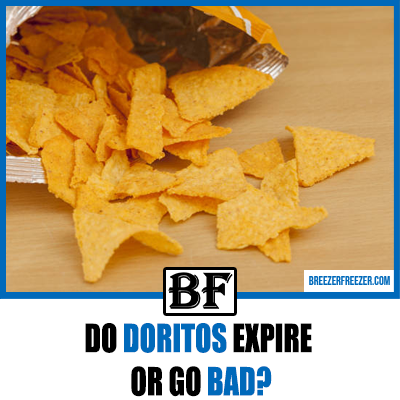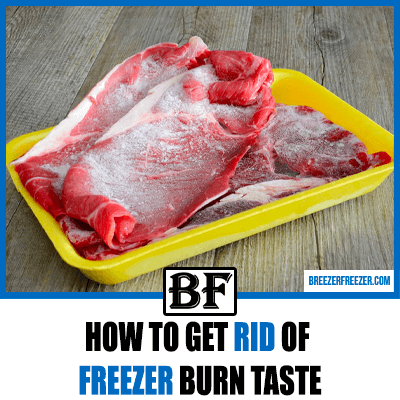Can you freeze stir fry? Freezer storage guide
Convenient food doesn’t mean it has to be fast food from the local burger chain or the stir-fry franchise. Convenient food is where you prep your food in advance and freeze it ready for that quick cook-off. Stir fry is a wonderfully simple dish full of nutrition and wholesome food, but why don’t we see more frozen stir fry in the grocery store’s freezer section?

Did you know the most common mistake with home stir fry is that it has a watery sauce at the end? This can be combated by making a quick cornstarch slurry to turn the flavorsome water into a sauce that will stick to the vegetables and proteins.
Who doesn’t love stir fry? It is fast, cheap, and delicious. This article will examine how you can get the best from stir fry by freezing stir fry in advance, ready for that quick meal when you are hungry.
Let’s get into it.
Does stir fry expire?

Yes, stir fry is made for perishable foods like veggies and proteins. Stir fry has a short shelf life.
The stir fry’s shelf life will depend on the protein used. If you are using beef and meat for the stir fry, it’s going to last longer than if you use shrimp.
Living in a fast-paced society can lead to all types of weird and wonderful creations. It is going to be about the quality of the ingredients. Are you using the freshest veggies from the farmer’s market, or are you using canned veggies?
But when it comes to nutrition, stir fry has to be at the top of the table. It delivers proteins and vegetables in decent quantities.
But should you prepare the stir fry raw by adding meat and veggies and a sauce in marinades, or should the stir fry be cooked and stored? Does it even make any difference which way you do it?
But there are a lot of contradictions and falsehoods surrounding stir fry and how it should be stored. Some say that stir fry vegetables only last for one month, while supermarkets store stir fry veggies for up to 10 months!
Why is there such a discrepancy that is causing confusion? It’s hardly surprising young cooks are confused and miss out on the pleasures of preparing convenient food due to misleading information.
Let’s get to the bottom of the stir-fry issue, so you have the best information based on facts.
Does stir fry need to be refrigerated?

Yes, in all situations. If you are going to make a stir fry for storing, you have two options: cook the stir fry, save it in an airtight container, and add a sauce when you reheat. Or cut the vegetables and meat, place them into an airtight container, and place them in the fridge.
It seems simple and straightforward, and it is, but which one will give you better quality food at the end of the day? The uncooked stir fry is the best choice. The ingredients are fresh and will be cooked, keeping them crisp and crunchy.
But the truth is both options have their merits and different flavor profiles, so the jury may be out on which is best until you decide.
Does the stir fry need to be covered?
Yes. It’s called food hygiene. If you are placing raw meats and maybe shrimp in the fridge, they should be covered to prevent cross-contamination with other foods in the fridge; bacteria is still present in the fridge even if it is being kept under control.
If the ingredients in your stir fry include onion and garlic, which is part of the triunity of essentials for a good stir fry, the intense odors will infuse into other foods contained in the fridge.
If the stir fry is partially cooked, it should be covered for the same reasons.
Can you put warm stir fry in the fridge?

If you read online that you can put a warm stir fry in the fridge because of condensation coalescing into water droplets that will drip and make your protein soggy and less appealing at best is why you can’t put the warm protein in the fridge, you are being misled.
Your fridge temperature will be 40℉ -18℃ or a little lower. Placing a warm protein in the fridge will elevate its temperature while it radiates heat.
Your fridge may not be as efficient as you might have thought at removing heat. Most fridges take hours to come to 40℉ after being switched on after cleaning.
So, what’s the big deal? The big deal is that food sitting at a temperature of 40-140℉ is in the food danger zone. It’s not just your chicken. It is the contents of the entire fridge.
Above 40℉-18℃ bacterial growth on perishable foods will accelerate exponentially. It should be discarded if the food remains at an elevated temperature above 40℉-18℃ for just two hours.
According to the USDA, after two hours in the food danger zone, perishable foods contain enough bacteria to cause food poisoning.
How long can stir fry sit out?
2 hours. When your stir fry is cooked and ready for serving, it’s easy to have a few glasses of wine while chatting with friends as time passes by. But the truth is that stir fry is growing bacteria.
In a short two hours, the bacteria growth on the stir fry will have accelerated to colossal proportions making the food unfit for consumption.
Ok, you can regret the food to kill off the bacteria, and that does seem like a reasonable idea, and the bacteria will be killed off. But the toxins left by the bacteria will be as dangerous as if the food had not been reheated, and the potential for food poisoning remains real.
The information is from the USDA and can be checked on their website.
How long does stir fry last in the fridge?
It will depend on the ingredients and the freshness of the ingredients. If you reasonably assume that cut veggies have roughly the same shelf life (not canned sweet corn, it can get funky quickly), then you could expect the vegetable element of the stir fry stored in an airtight container to last for weeks.
However, protein has a hotter shelf life assuming you will be using a protein in the stir fry. Beef has the most extended shelf life, and then chicken. If you opt for shrimp, the shelf life in the fridge is a measly two days.
To keep your stir fry for longer, add the protein just before cooking or be dictated to by the shelf life of the protein.
Does frozen stir fry go bad?
It will depend on how the stir fry is stored, but by and large, the stir fry should be fine in the freezer for at least a few months, if not longer.
Follow this storage guide for the best results.
- Prepare the vegetables for the stir fry; use the freshest vegetables possible, and avoid canned veg. It will be mushy after freezing.
- Blanch the vegetables for three minutes in a pot of rolling boiling water.
- Palace the veggies on a baking tray and allow them to cool. You could use an ice bath to stop the cooking, but three minutes for average stir fry vegetables should be sufficiently short not to cook the veggies. At this time, you can decide if you want to add proteins to the stir-fry. Precooked chicken has a four-month shelf life in the freezer.
- Pat your vegetables dry as best you can. It will pay dividends. It can be difficult with broccoli but stick with it.
- If you wish, you can flash-freeze the vegetables at this point, but domestic freezers are not cold enough, so it is somewhat of a waste of time.
- Place the veggies into an airtight bag, place them flat, and try not to crush them; when the stir-fry veggies air in the bag, expel as much of the air from the bag as possible, then seal the bag.
- Mark the bag with the date of freezing.
Freezing pre-cooked stir fry
This is only possible if the vegetables are crispy, like in a stir fry. The freezing process will make the mush more pronounced if they are mushy.
- Separate the veggies and put them on a baking tray. This time leave the vegetables in the freezer for two hours as we try to preserve them.
- Remove the vegetables and proteins and place them into Ziploc bags, expel as much air from the ziploc bag as possible, and seal it.
- Place in the freezer after marking the bag with the freezing date.
How to thaw stir fry?
There is no need to thaw. You can go straight from the freezer to the wok in one effortless motion, turning convenient food into tasty fast food.
Final thoughts
The shelf life of the stir fry in the fridge will be dictated by the shelf life of the protein in the stir fry.
Stir fry in the freezer is quick and convenient, and you can gain more than four months in the freezer with your stir fry maintaining its texture.
Stir fry is meant to be fast, tasty, and fun.





